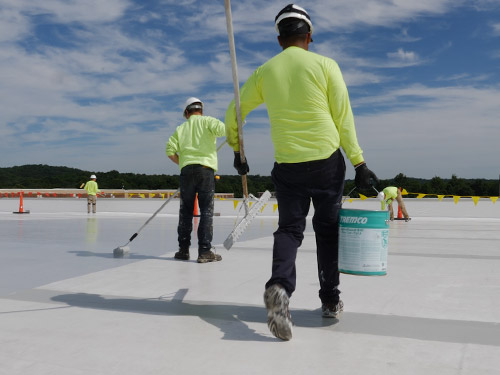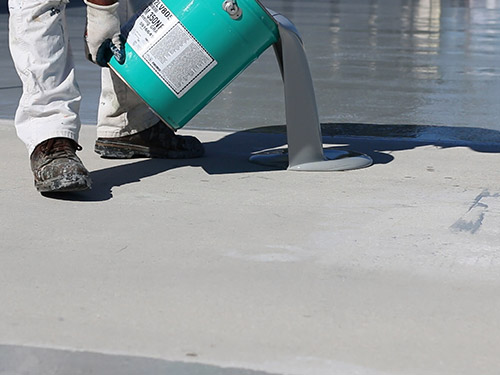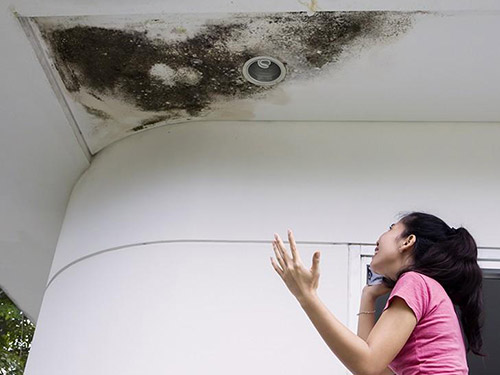1. Complete Waterproofing
The roof is a shelter from the elements, and since it is usually the highest point, it has the greatest potential to pool rainwater due to its large surface area. Therefore, waterproofing is undoubtedly the most important step in the roof installation process. It not only serves to prevent critical water damage to the building and everything residing within it, but it also protects against growth of mould which can spread to the interior ceilings and walls due to moisture penetration.
That said, buildings with green roofs must perform all the above with the added responsibility of ensuring that the water from its plants and vegetation do not compromise the building’s structural integrity or lead to water damage or mould growth. The added weight of soil, plants, and water can exacerbate the potential consequences of leaks or moisture penetration.
A compromised waterproofing layer can lead to moisture seeping into the building structure, causing rot, deterioration of building materials, and weakening of structural components. Proper waterproofing safeguards the building's investment by preventing long-term damage caused by water-related issues.
Tremco manufactures a wide range of high-performance waterproofing systems like the TREMproof 201/60 and TREMproof 250GC that are suitable for green roof applications. These fluid-applied waterproofing systems possess high elongation and elastomeric properties that deliver excellent crack-bridging ability, effectively ensuring watertightness.
2. Sufficient Drainage
Drainage components, when incorporated, enhance the performance of the overall waterproofing system, and reduce the amount of hydrostatic pressure and weight of water-saturated soil. Adequate drainage systems, such as drain mats, drain boards, drainage layers, and drainage pipes, help prevent water from stagnating in the soil. This serves a dual purpose – that plants receive the necessary oxygen, and that excess water is efficiently removed from the soil. Healthy plants contribute to the thermal insulation, stormwater management, and aesthetic appeal of green roofs.
Likewise, proper drainage also limits the accumulation of excess rainwater and reduces the load on the structure which can cause stress on the building's framework, leading to cracks and shifts. By distributing the weight evenly, drainage systems reduce the risk of overloading, ensuring the safety and longevity of the building.
Tremco’s TREMDrain 10/8G & 10/12G multi-composite drainage and protection boards feature a combination of filter fabrics and drainage core. The geotextile fabric allows water to pass into the drainage core while keeping soil particles out. The drainage core acts as a protection course and creates a high-capacity drainage plane.
3. Root Barrier Considerations
In a green roof, plants' roots (especially those from mature plants) can potentially breach the waterproofing layer over time, leading to leaks and compromised integrity. To prevent this, a root barrier is often incorporated as part of the waterproofing system. The root barrier is designed to prevent plant roots from penetrating the waterproofing membrane while allowing water to pass through.
There are generally two types of root barrier systems – physical (HDPE panels, deflector systems) and chemical (additives). The former is used to physically block root growth and penetration, while the latter involves the use of substances that inhibit root growth. Careful selection and installation of a root barrier are crucial to maintaining the integrity of the waterproofing system.
The Tremco Antiroot Additive is a chemical root barrier that protects construction materials from undesirable root penetration without damaging the plants. It provides long-term protection and remains effective even under harsh weathering conditions. This added step of including a root barrier solution minimizes the risk of premature deterioration and the associated repair costs.


 Waterproofing and Roofing
Popular Types of Commercial Roofs and Waterproofing Systems
Waterproofing and Roofing
Popular Types of Commercial Roofs and Waterproofing Systems
 Waterproofing and Roofing
Sheet vs Fluid Applied Waterproofing
Waterproofing and Roofing
Sheet vs Fluid Applied Waterproofing
 Waterproofing and Roofing
Common Problems Associated with Poor Waterproofing
Waterproofing and Roofing
Common Problems Associated with Poor Waterproofing
